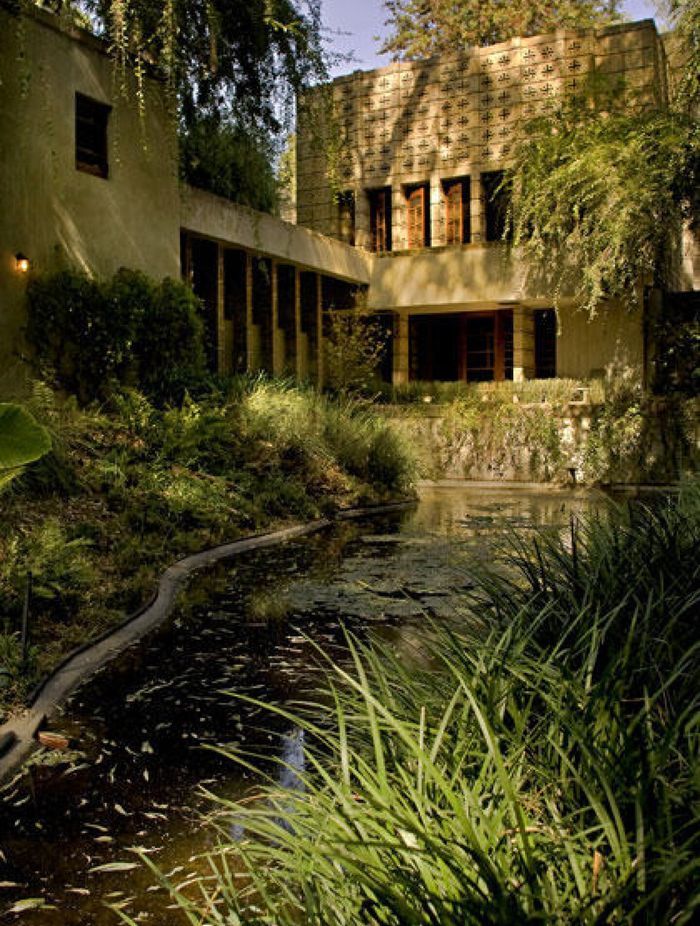The possibilities of textured and coloured concrete

Known for its strength and functionality, concrete has a reputation as a reliable building material. In the 1950s, the Brutalist architecture movement established the material's association with cold, imposing buildings, but both pre-and post-brutalism architects have explored the material in very different ways.
In his autobiography, American architect Frank Lloyd Wright said of his acclaimed work, the Millard House, that he sought to "find a hitherto unsuspected soul in it [concrete] – make it live as a thing of beauty – textured like the trees". Similarly, modernist Mexican architect Luis Barragán stated his concrete home was "an emotional piece of architecture, not a cold piece of convenience".
With decorative and emotive potential, concrete can be used as both a practical and sculptural material. Working across commercial, residential and rural sites, Canterbury Kerb and Concrete (CKC) has a wealth of knowledge in the possibilities of the concrete, boasting an extensive range of colours.
Vicky Steele of CKC explains how texture can be created through various techniques. “Textures can be created by stamping, exposing the concrete (exposed aggregate) or finishing the surface with a broom or sponge before the concrete sets."
Much like it sounds, stamping is a process in which freshly poured concrete is stamped with a patterned stamp mat. This can be done to replicate stone, tile, brick or even wood, without sacrificing the integrity of the concrete.
The impact of stamping can be amplified in combination with other clever techniques, for instance, colouring concrete and cutting it into squares or rectangles to replicate paving.
“Concrete needs to be cut when finished anyway to help prevent cracking, so why not make that part decorative?” Vicky adds.

![Wright sought to 'find a hitherto unsuspected soul in it [concrete] – make it live as a thing of beauty – textured like the trees'.](/images/cdn-images/width%3D3840%2Cquality%3D80/images/s1/article/lifestyle/TM2.jpeg/eyJlZGl0cyI6W3sidHlwZSI6InpwY2YiLCJvcHRpb25zIjp7ImJveFdpZHRoIjo3MDAsImJveEhlaWdodCI6OTI2LCJjb3ZlciI6dHJ1ZSwiem9vbVdpZHRoIjo3MDAsInNjcm9sbFBvc1giOjUwLCJzY3JvbGxQb3NZIjo1MCwiYmFja2dyb3VuZCI6InJnYig1OSw0OCwyOCkiLCJmaWx0ZXIiOjB9fV0sInF1YWxpdHkiOjg3fQ==)
Exposed aggregate is created by removing the surface of the concrete to expose the stones underneath.
“With this product, there are heaps of choices. Different aggregates (stones) can be added to the concrete for different looks, and some designs can be affected by having part of the concrete sandblasted,” Vicky explains.
Vicky also suggests the techniques of infill concrete and stencilled concrete. The former involves filling recessed areas of an existing concrete surface with contrasting material or colour to create bold designs or patterns.
The infill is typically a different colour, texture, or material, which forms a striking contrast against the primary concrete surface.
Stencilled concrete involves placing a stencil on the concrete surface before applying a coloured or textured material over the stencil to create a specific pattern or design.
The stencil serves as a template, and the coloured or textured material adheres only to the exposed areas of the concrete, leaving the rest of the surface unaffected. This technique can create intricate, custom designs.
“There can be many reasons for texturing concrete, including practical reasons like improving grip,” adds Vicky.

The possibilities of coloured concrete are just as numerous as their textured counterparts.
“The colour choice is quite significant,” shares Vicky. “It can dramatically impact driveways, patios, paths and floors.”
CKC offers a range of 36 colours, including warm tones such as ‘terracotta’, ‘cashmere’, meditative greens like ‘teal’, and deep shades such as ‘black velvet’.
“People can choose colours that better match, or contrast with, the colour schemes of their homes. Even brand new, plain concrete, can have a half shot of black oxide in it to take away the bright white, just-poured look, or to blend in with older, existing concrete.”
While there is a limit to the amount of colour that can be added to concrete, Vicky explains how to enhance the colour after the pigment has been mixed. “The finished product can be enhanced further by colour sealing afterwards.”

By creatively implementing time-tested techniques, CKC uses concrete to create bold, statement features and intricate patterns, which can be complimented by a clever use of light.
“LED lighting can be set into concrete for even more impact. It is important to discuss this with CKC before the concrete is poured,” Vicky adds.
To achieve a seamless result, good preparation is essential. “Formwork (boxing) is done to ensure the concrete falls the right way for drainage so that we adhere to council specifications.
"Driveways, patios, paths, and more, can be boxed to create curves and shapes. This is a simple way to improve the look of an area to be concreted.”
Combining textured and coloured concrete opens up a world of design possibilities, which can be developed with the help of a skilled contractor.
"At CKC, we can place any type of concrete, be it coloured or textured,” says Vicky.
